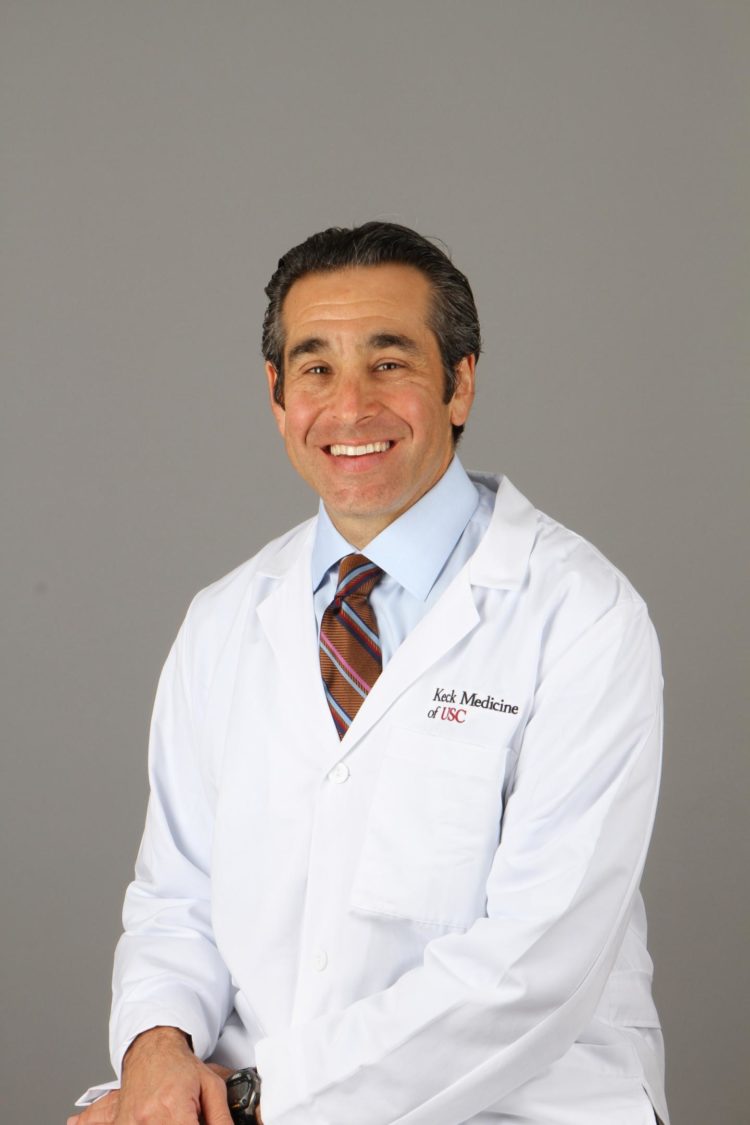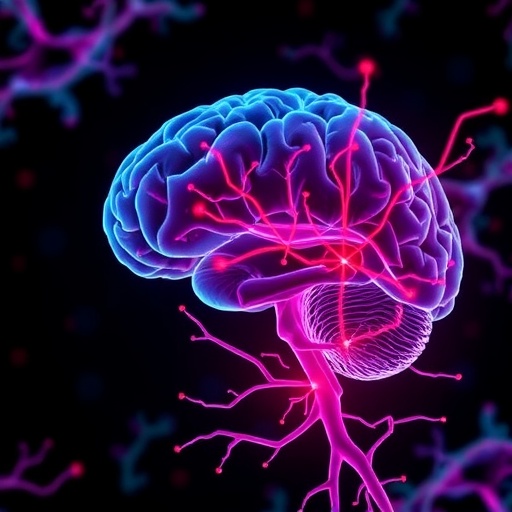The trial, led by Keck Medicine of USC, will use spinal cord stimulation that earlier research suggests might treat bladder dysfunction

Credit: Keck School of Medicine
LOS ANGELES – Keck Medicine of USC urologists are launching a clinical trial to evaluate the effectiveness of spinal cord stimulation in patients with an overactive bladder due to neurological conditions, such as a spinal cord injury or stroke, and idiopathic (unknown) causes.
Researchers will use a technique known as Transcutaneous Electrical Spinal Cord Neuromodulation (TESCoN), a noninvasive therapy that delivers low-intensity electric impulses to the spinal cord.
The trial follows a recent study published in Frontiers in Systems Neuroscience led by Evgeniy Kreydin, MD, a Keck Medicine urologist and assistant professor of clinical urology at the Keck School of Medicine of USC. Kreydin and colleagues treated 14 patients with bladder dysfunction due to either spinal cord injury, stroke, multiple sclerosis or idiopathic cause with spinal cord stimulation sessions three times a week for eight weeks. All patients reported improved bladder sensation as well as a reduced number of incontinence episodes and night-time bladder voiding.
An overactive bladder causes several urological problems, such as frequent urination and incontinence. Existing treatments for the condition can cause adverse side-effects or require invasive, highly specialized procedures.
“TESCoN is well-tolerated by patients and easy for doctors to administer,” says Kreydin, who will be co-investigating the trial along with Keck Medicine urologist David Ginsberg, MD, a professor of clinical urology at the Keck School.
In this double-blinded, sham-controlled trial, half the participants will receive two one-hour sessions of TESCoN per week over 12 weeks. The stimulation will be applied via electrodes attached to a device that emits low-intensity impulses through adhesive pads placed on the patient’s back. The other half of the participants will receive a placebo, or sham stimulation over course of the trial.
The trial will track subjects’ number of daily urination and incontinence episodes over 72-hour periods. Researchers will then compare the data between the beginning and the conclusion of the trial, and between those receiving the real or sham stimulation. In addition, trial participants will complete bladder symptom questionnaires before and after receiving the treatments to further track improvement.
TESCoN is developed by the medical device company spineX. Company founders will be initiating discussions with the U.S. Food and Drug Administration to gain regulatory approval for the procedure.
The exact mechanism of how TESCoN improves bladder function is not known. Kreydin speculates that the stimulation retrains the spinal neural networks to properly store and void urine and to regain bladder sensation. For patients with a spinal cord injury or a neurological disorder, the nerves controlling the bladder are either cut off or disrupted.
“The ultimate goal of the trial is to improve peoples’ sense of well-being,” says Kreydin. “An overactive bladder can cause discomfort, inconvenience and embarrassment. The more control patients have over their bladders, the more control they have over their lives.”
###
Participants of the trial need to be between the ages of 18 and 80, and have a known diagnosis of overactive bladder. The trials will be held at USC Verdugo Hills Hospital in Glendale and the Rancho Los Amigos National Rehabilitation Center in Downey. People interested in being part of the trial can call 310-825-4780. Additional information on the study can be found here.
The study preceding the trial was funded in part by the Conquer Paralysis Now Challenge award, Walkabout Foundation, Dana & Albert R. Broccoli Charitable Foundation and Nanette and Burt Forester, including matching by PwC LLP and International Foundation for Research in Paraplegia.
About Keck Medicine of USC
Keck Medicine of USC is one of only two university-based medical systems in the Los Angeles area. Its internationally renowned physicians and scientists provide world-class patient care at Keck Hospital of USC, USC Norris Cancer Hospital, USC Verdugo Hills Hospital and more than 80 outpatient clinics in Los Angeles, Orange, Kern, Tulare and Ventura counties.
Keck Medical Center was ranked No. 16 on U.S. News & World Report’s 2019-20 Best Hospital Honor Roll and among the top 3 hospitals in Los Angeles and top 5 in California. The hospital also ranked in the top 4 in urology (tie); top 10 in geriatrics; top 15 in ophthalmology, cardiology & heart surgery, gastroenterology & GI surgery and nephrology; top 20 in neurology & neurosurgery; top 25 in cancer; and top 35 in pulmonology & lung surgery.
For more information, visit KeckMedicine.org.
Media Contact
Mary Dacuma
[email protected]
323-865-7839
Related Journal Article
http://dx.





